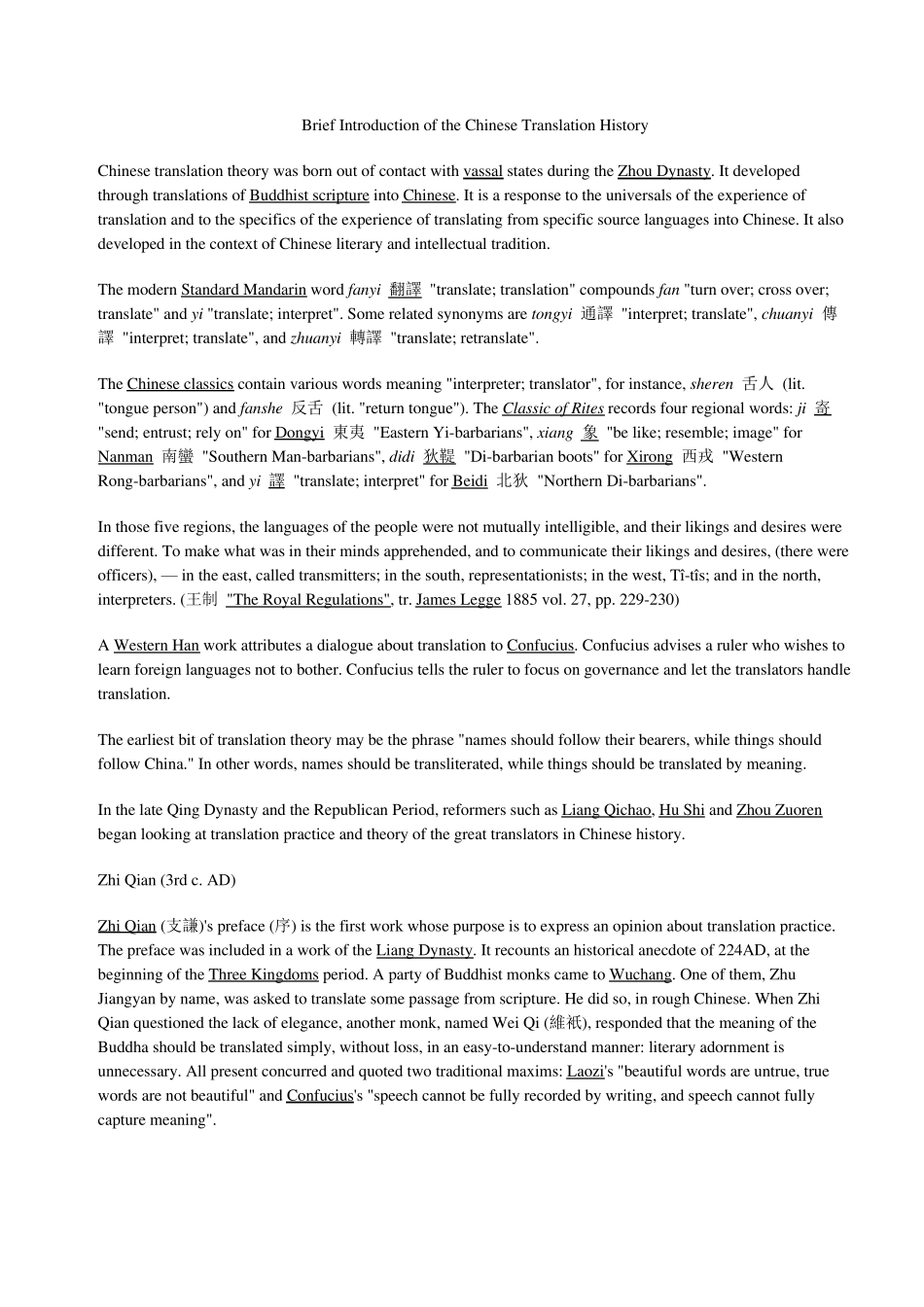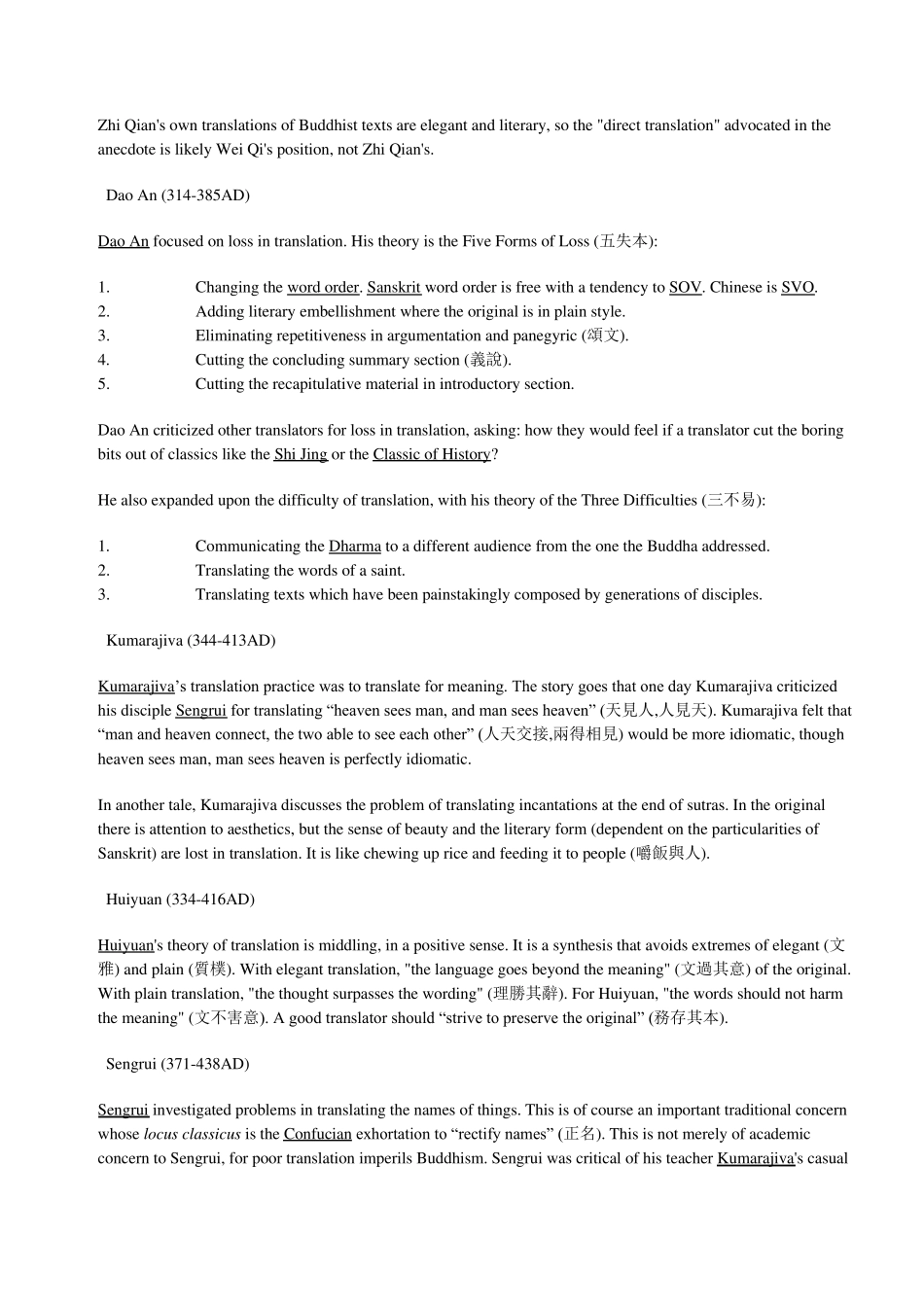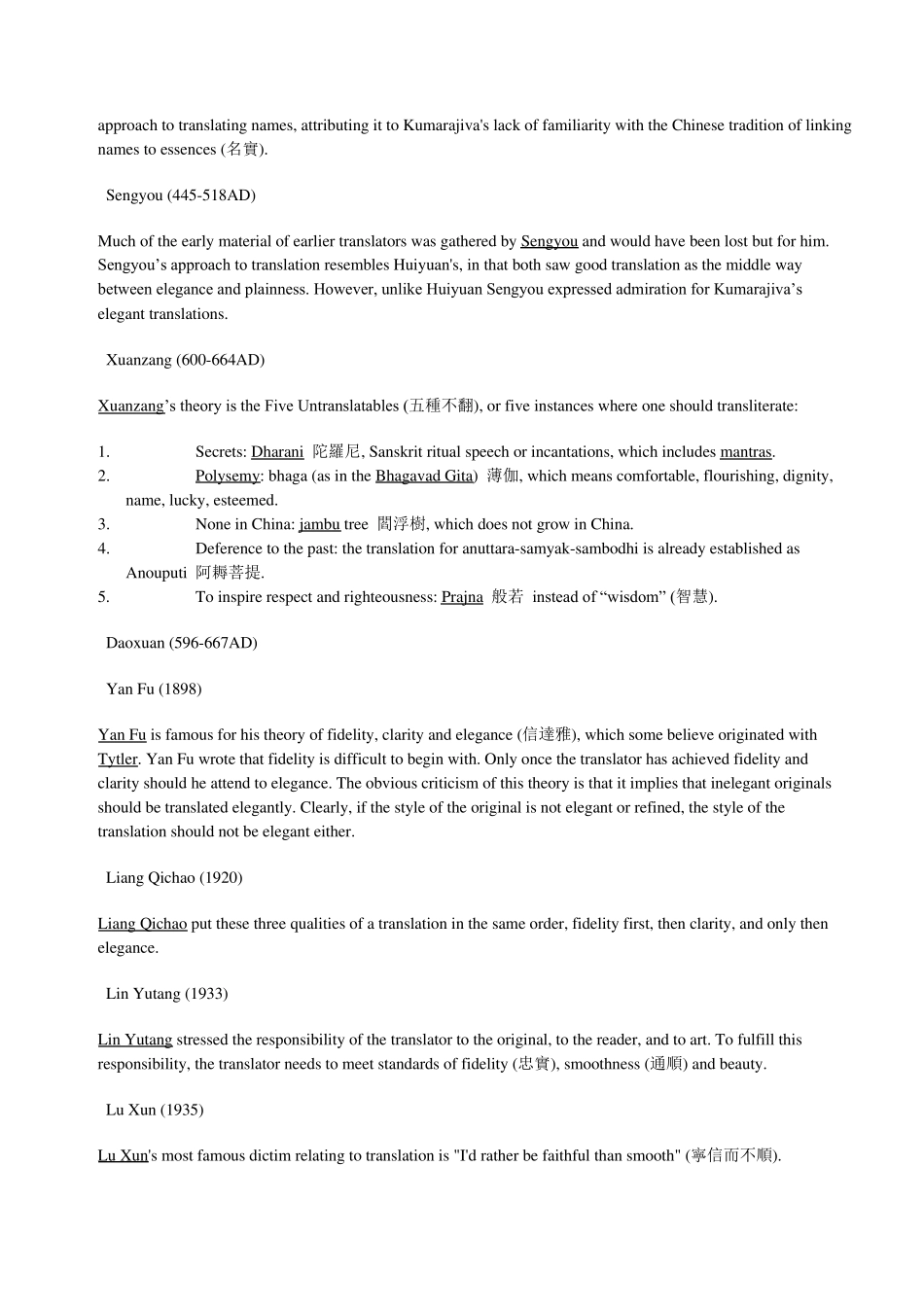Brief Introduction of the Chinese Translation History Chinese translation theory was born out of contact with vassal states during the Zhou Dynasty. It developed through translations of Buddhist scripture into Chinese. It is a response to the universals of the experience of translation and to the specifics of the experience of translating from specific source languages into Chinese. It also developed in the context of Chinese literary and intellectual tradition. The modern Standard Mandarin word fanyi 翻譯 "translate; translation" compounds fan "turn over; cross over; translate" and yi "translate; interpret". Some related synonyms are tongyi 通譯 "interpret; translate", chuanyi 傳譯 "interpret; translate", and zhuanyi 轉譯 "translate; retranslate". The Chinese classics contain various words meaning "interpreter; translator", for instance, sheren 舌人 (lit. "tongue person") and fanshe 反舌 (lit. "return tongue"). The Classic of Rites records four regional words: ji 寄 "send; entrust; rely on" for Dongyi 東夷 "Eastern Yi-barbarians", xiang 象 "be like; resemble; image" for Nanman 南蠻 "Southern Man-barbarians", didi 狄鞮 "Di-barbarian boots" for Xirong 西戎 "Western Rong-barbarians", and yi 譯 "translate; interpret" for Beidi 北狄 "Northern Di-barbarians". In those five regions, the languages of the people were not mutually intelligible, and their likings and desires were different. To make what was in their minds apprehended, and to communicate their likings and desires, (there were officers), — in the east, called transmitters; in the south, representationists; in the west, Tî-tîs; and in the north, interpreters. (王制 "The Royal Regulations", tr. James Legge 1885 vol. 27, pp. 229-230) A Western Han work attribute...


